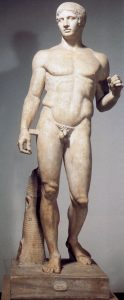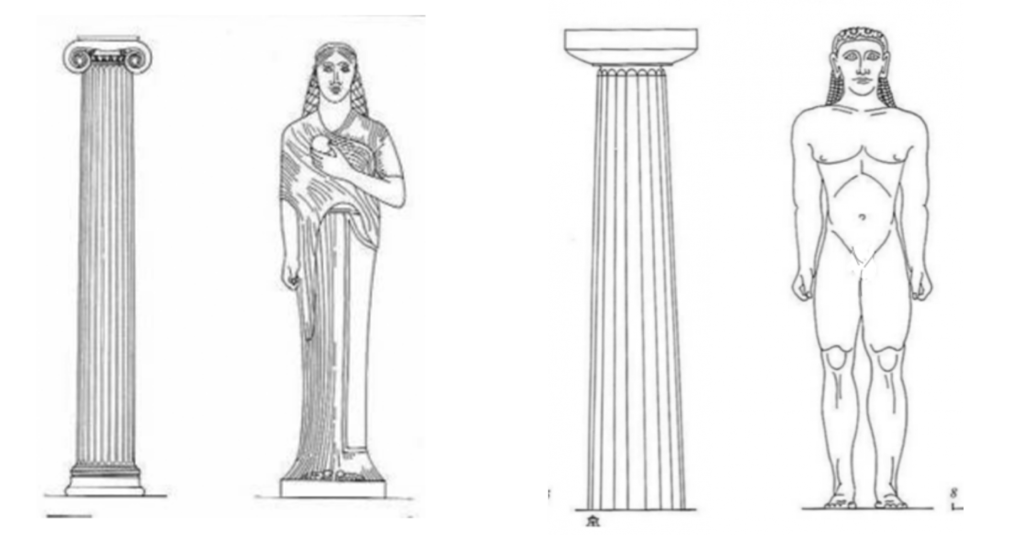Beauty in the Human Scale
Beauty in the Human Scale
Before we can fully understand the Greek and Roman system of building which is a key element of a timeless house, we need to understand why they built with this system. To understand the why, we need to understand their concept of beauty.
In truth, a society’s concept of beauty will determine whether they can build anything beautiful at all.
The Greeks pursued the art of beauty as an ideal. In particular, they pursued the ideal of beauty as it was revealed in the human form. They saw the human body as a model, as a temple, where perfect proportions were self-evident. Man, it was thought, was a model of the universe. By studying man and the body’s order, they in turn could gain clues on the order of the universe. Knowing that all bodies did not look the same, they pursued an “ideal” body. Much like today we might idealize the qualities of a great athlete, the Greeks had an ideal as well.
Much like today we might idealize the qualities of a great athlete, the Greeks had an ideal as well.

The Greek sculptor Polycleitus worked out a “canon”, or an ideal set of proportions, for the human body. It is represented in his sculpture of the “Spear Bearer” (right). This sculpture is a picture of the ideal of Greek design: harmony, balance, composition and form, all beautifully and perfectly displayed.
It only makes sense that the orders of architecture they established for their buildings are so closely related to the ideals in the human body. If the human body in its perfect form mimics the universe in its perfect form, then the math that ties them together ought to be the math that determines the shape and style of their buildings.
.

From the feet to the hand, from the base to the roof, all the parts of a Greek temple were designed to work together and were sized accordingly. Like the human body, their buildings are balanced, symmetrical and harmonious. The buildings stand comfortable and communicate strength and honesty in form.
.
The buildings stand comfortable and communicate strength and honesty in form.
On the human body, just as the finger is proportionate to the hand, the hand to the arm, and the arm to the body, so too in the Classical system of building the parts are proportionate to the whole. The Greeks and Romans each developed 3 models for building, all of which were meant to correspond to the male and female bodies. These models, or rules for building are where the “orders of architecture” start. For the Greeks, the 3 orders were Doric, Ionic and Corinthian. These rules in fact help determine molding size, which because they are relational to other parts of the building grow or shrink depending on the size of the building or the room. This isn’t a static system of one size fits all, but one that grows and morphs and transforms based on use and purpose.
This isn’t a static system of one size fits all, but one that grows and morphs and transforms based on use and purpose.

As humans, we innately understand this system because it uses the human body as the model of its design. It is the reason some old buildings just feel right.
The classical system of building, like the human body, works not just visually but literally. A keystone was not just a decorative symbol or emblem to place over a window, but had structural importance that kept the brick or stone above from falling down. A column and its parts and pieces were sized and proportioned and detailed according to the needs and issues of the building.
These buildings work and perform and last because they make sense.

